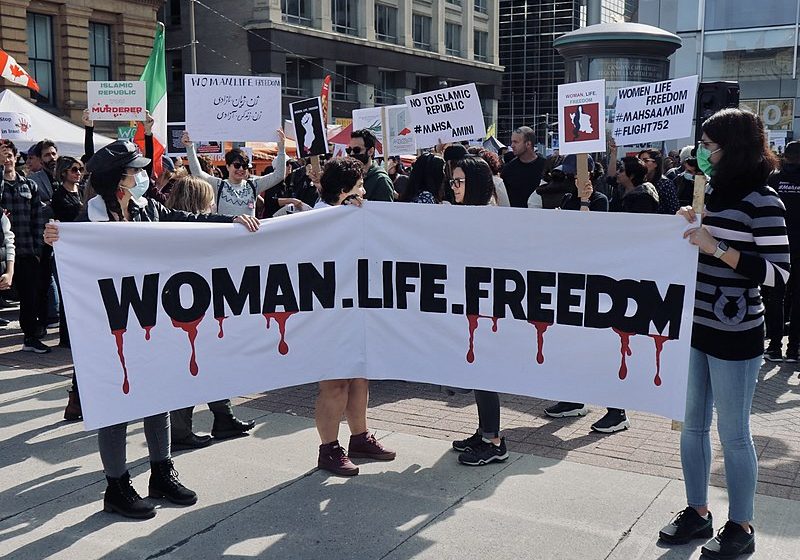Australia/Israel Review
The “Snapback” Crisis
Sep 29, 2020 | Seth Frantzman

Why the stakes extend beyond Iran
The Trump Administration has sought to re-impose snapback sanctions on Iran under UN Security Council Resolution 2231. The decision was announced by US Secretary of State Mike Pompeo in the first hours of Sept. 20. It marks a month since the US informed the UN Security Council of Iran’s non-compliance with provisions of the 2015 Iran nuclear deal, also known as the Joint Comprehensive Plan of Action (JCPOA). However, most countries appear to oppose the US “snapback” and Iran is already manoeuvring to exploit this to undermine the US role in the Middle East.
Russia, Turkey, China and others will also seek to use this to their benefit as they also want to reduce the US role in the region and globally. This is a unique moment in world history and Iran believes it will be a symbolic end to US hegemony, marking an end of 30 years of the US role that began with the Gulf conflict in 1990.
Pompeo says that soon the US will announce a range of additional measures to strengthen the enforcement of UN sanctions on Iran. This is part of the multi-year “maximum pressure” campaign the US began in 2018. The US sought to reduce Iran oil exports to almost zero. Iran has shipped gasoline to Venezuela and Syria nonetheless. The US also sought to keep an arms embargo on Iran. That embargo also appears likely to expire.
While there is hope by Trump Administration supporters that the US decision to move forward on snapback will work, the consensus in Europe, Russia, Iran and elsewhere appears to be that it will not. Iran’s media has been quick to seize on reports of European disagreement with the US to showcase that it will defeat the US on the issue of sanctions.
Iran’s Press TV says that Josep Borrell, the top EU foreign policy bureaucrat, disagrees with the US. France, Germany and the UK also appear to disagree with the US. Iran’s UN mission has sent a letter slamming the US decision as well. Iran argues that the UN Security Council does not agree with the US position and that Washington has not been a party to the Iran deal since 2018 because the US walked away from the JCPOA that May. Iran says the US view is “null and void” and the US has no legal standing to enforce snapback.
This all sets up a complex battle not only between the US and Iran but also between the US and Russia and China and between the US and Europe. Washington appears prepared to use secondary sanctions against countries that violate its understanding of snapback. It has made similar threats about those that violate the arms embargo that the US wanted imposed.
From Iran’s point of view, as well as that of Russia and China, the US has walked into a trap. They want to call its bluff on this and prove that they can do as they please despite US threats, setting up a crisis in which the US will lose because the US will be shown not to have the international diplomatic or economic clout it once had. In a sense they want to push this issue, waving a red flag in front of the Trump Administration, and hoping that it charges. They are gambling on the US stumbling as it tries to take on too many crises at once.
They also know the US has an election in November. The message from Moscow and other states has already become clear: The era of US global hegemony is over and we live in a multi-polar world now.
Pompeo has said the US will do what is necessary to enforce the arms embargo on Iran. The US wants UN member states to comply.
This would also supposedly target Iranian enrichment of nuclear material, which has increased. Iran has already violated various promises on levels of enrichment and stockpiles. But the UN is reticent to do anything, with the excuse that there is too much “uncertainty.”

Iran is deliberately and defiantly showing off ifs new enrichment and missile activities in order to test the new US approach
In reality the whole crisis has shown how weak the JCPOA was in the first place. It virtually guaranteed Iran an end to an arms embargo and sanctions relief and enabled it to eventually do whatever it wants. This is because most of the countries that wanted the deal wanted a legal way to let Iran do what it wanted and to create a complex structure such that it would be difficult to go back to sanctions. Iran has called that bluff as well by simply announcing it was breaking limits on enrichment, with no consequences. The deal in the end basically gave Iran a right to develop material to the point of nuclear weapons capability even while ostensibly keeping it from doing so.
Elliott Abrams, the US Special Representative for Iran, has indicated that the new American pressure mechanisms will target enrichment, the development of new missiles and transfer of missile technology. However, it’s unclear how the US will prevent this if it comes from Russia or via Turkey and other states.
Iran, however, is showing off its new enrichment and missile activity. It continues to announce new ranges and precision for drones and missiles. It sent a military satellite into orbit. It said on Sept. 14 that it has 1,000 centrifuges at its Fordow facility carrying out enrichment. The only setback for Iran appears to be a July explosion at its Natanz facility, which it thinks was foreign sabotage.
Iran wants to test the US approach. The US says Iran is in breach of the deal. The US has also walked away from the deal. Iran is gambling that the UN will stand with Teheran and that in its dispute with Washington it will get Russia, China, Turkey, Europe and other states on its side, historically isolating the US.
Russia’s Foreign Minister Sergey Lavrov has indicated Russia will no longer obey Western international rules.
Iran wants to accelerate this isolation, and China likely wants the same. China has been testing missiles and conducting more aggressive flights to challenge the US in the Pacific. Russia has also been challenging US B-52 flights from Alaska to the Black Sea. Recently, US F-22s intercepted Russian airplanes near Alaska. Meanwhile, Russian supersonic bombers broke a world record in mid-September, flying some 20,000 kilometres in 25 hours.
The message is clear. This isn’t just about the Iran deal or the snapback. This is about a re-ordering of the world. Iranian defiance of the US sanctions, with outside support, is meant to be symbolic of a process that has taken place over the last ten years.
The significance of the Iran crisis is that the US “new world order,” put in place after the Gulf War 30 years ago by US President George H.W. Bush, has now eroded to the extent that it may be over. Iran hopes that the US gamble on snapback will be the final throw, the denouement that ends the US role in the Middle East.
Seth J. Frantzman is oped editor and Middle East affairs analyst at the Jerusalem Post. © Jerusalem Post (jpost.com), reprinted by permission, all rights reserved.
Tags: Europe, Iran, JCPOA, United States






